Day 6: The Finale!
Nothing fires the imagination more than a visit to the infamous Tower of London. Since I first saw it in 2006, it has always been one of my favorites. In fact, I used the Tower as the subject for my final art history paper at university. It offers a piece of history for everyone and is not just focused on dungeons and executions as much as public advertising would like you to think. Besides a prison, it was a medieval palace, zoo, mint, armory and a space observatory. The current exhibition is on the royal menagerie. The story of all the beasts at the Tower is half the excitement. They opened up two further towers to view, which were not usually open to the public. These are the Brick and Bowyer towers. In the latter, a famous prisoner was executed by being drowned in a barrel of malmsey wine. But we’re not concerned about medieval drama…no, we are looking for the last vestiges tied to the Tudors. Thankfully, there’s plenty to see…
First off, I seriously recommend you arrive at the Tower early and be the first to get in at 9 AM. Everyone makes a mad dash for the crown jewels that will leave you with the wall walk all to yourself! Upon entering the Tower of London, you’ll first come across the Bell Tower.
This structure used to be part of the outer wall when it was first built around 1180. After the addition of the outer wall (a second concentric defensive perimeter), it was grouped into what is now called the inner ward. It was oftentimes used as a prison, holding individuals such as Bishop Fisher, Thomas More, Thomas Wyatt and then Princess Elizabeth. Wyatt wrote one of his famous poems (Innocentia Veritas Viat Fides Circumdederunt me inimici mei) based on witnessing the execution of several of his fellow courtiers who were condemned to die for being Anne Boleyn’s “lovers”: “The Bell Tower showed me such a site that in my head sticks day and night. There did I learn out of a grate that for all favor, glory or might, that yet circa regna tonat”.
The area between the Bell and Beauchamp Towers is known as Princess Elizabeth’s walk as this was the range of freedom she had while being imprisoned by her catholic half sister Mary I. Now, the start of the wall walk begins with the entrance to St. Thomas’ Tower. In the first room, you can still see the fortified beck and timber walls that Henry had installed for Anne’s coronation ceremonies. The roof needed to support the weight of the ceremonial guns! The rooms also lodged the gentleman responsible for orchestrating the whole thing. You then move through to the Wakefield Tower where tradition claims the last Lancastrian King, Henry VI, was murdered (see Day 4 at King’s College). Upon exiting the Wakefield Tower, there is a great picture of what the inner courtyard looked like before the 1500s. It was much the same when Anne was there.
The great hall where her trial was held would have been right in front of you. If you walk across the wall and line up to the remains of the Wardrobe Tower, you’d be looking at where the Queen’s apartments once stood (and where Anne spent her last days). As the wall walk continues, the Salt Tower contains graffiti carved by Elizabeth’s Italian tutor who was imprisoned by Queen Mary. At the end of the walk is the St. Martin Tower. Upon entering, look straight ahead and you’ll find another carving behind plexiglass. This reads “Boullan”. Alison Weir shows an interpretation of it in “The Lady In The Tower”. It is thought that perhaps George Boleyn had carved it. The tower did hold prisoners at the time so there is some plausibility.
Up next is the White Tower, which was the first structure, built by William The Conqueror in the 1070’s. Between spring 1532 and spring 1533, Henry added the ogre shaped copulas to the White Tower’s four turrets along with gilded weathervanes. Inside the Tower, you can find various Tudor artifacts including several suits of armor belonging to Henry and Edward VI. The size (width) difference between his 1520 and 1540 armor is astounding! The earlier version is laced with gilded HK symbols in reference to his first wife Katherine of Aragon. The patron saint of Spain, St. Augustine, is carved across the back of his armor while St. George is on the front. A jousting lance, linked to Charles Brandon, is also on display. The Norman chapel of St. John within the tower is one of the best preserved in the world. Important Tudor events occurred here:
– Elizabeth of York laid in state amongst a thousand lit candles (Henry VI had a fear of the dark).
– Arthur (Henry’s older brother) and Katherine of Aragon were married here by proxy.
– Henry stood in the alcove awaiting the verdict of his divorce trial at Blackfriars.
– Now Queen Mary held an illegal catholic mass while her half brother Edward VI was being buried at Westminster Abbey.
– Queen Mary was married to Phillip of Spain by proxy.
In the west room on the top floor, Henry created a new group of Knights of the Bath as part of Anne’s coronation proceedings. As you exit the White Tower, turn left and walk to the end of the turret and face the Waterloo Barracks. The ground in between is the supposed location of the scaffold upon which Anne was beheaded. The memorial further to the left was placed there to please Queen Victoria (Why Victorians, why?!!)
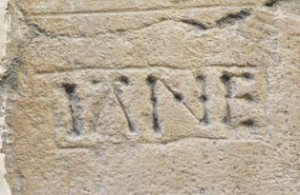
Possibly carved by Lady Jane Grey's husband, located in the upper chamber of the Beauchamp Tower at the Tower of London.
As you head over to the chapel, the tower before you is the Beauchamp Tower. In here are carvings of famous prisoners including Lady Jane Grey and Thomas Seymour. More importantly, you can find Anne’s falcon badge on the top floor, number 29. Note that the royal crown and scepter are absent, indicating her fall from grace was complete. This was most likely carved by one of the men executed alongside her.
The Tudor styled houses at the end are the lieutenant’s lodgings and are collectively known as The Queen’s/King’s House.
Finally we get to the Chapel of St Peter ad Vincula (in chains). If Hever is the Mecca for Anne Boleyn fans, then this is the Holy Grail.
Restored by Henry in 1522, the brick/stone walls were covered in white plaster. The chapel’s yard actually extended far beyond Tower Green under the present day Waterloo Barracks. At the altar are interred the remains of several notable Tudor figures…and at the top row on the left lies Anne herself. To her left is an empty marble tile. It is thought that her brother George lies there. In 1877 Doyne C Bell published his account of the Victorian restoration of the chapel. You can find a free copy on google books. He recalls the examination of the bones found in the altar floor and seems to have identified the remains of Anne herself. The only issue he brings up is the age that at face value throws the 1501 birth year out the window. Dating bones at the time was still a guess at best so there is a good chance that a +\- ratio needs to be applied. The bones were but into tiny lead boxes sealed with screws along with a plate identifying the bones. These were then placed back under the altar about one to two feet down and covered with the green marble tiles we see today. One historian from the 1800’s called the chapel “one of the saddest places on earth” for there are no monuments giving glory to the dead. I tend to agree with him.
Outside the Tower walls are two areas worth visiting. On the Tower embankment you can still find the Queen’s steps, so called because Elizabeth ascended these stairs as she went to the Tower as a prisoner.
To the north, by the WWI Seaman’s memorial, you can find a small square marking the spot of the scaffold on Tower Hill. A list of names, including Thomas Cromwell, is there as well.
After my Tower adventure, I went for a walk throughout the “City” borough of London. St. Dunstan’s on Fleet Street has a statue of Elizabeth I, which was actually erected during her reign though it is no longer in situ. At St. Bartholomew’s hospital near Smithfield, you can find the only other statue of Henry VIII (the other is at Trinity College) on the hospital entrance gate. Henry apparently gave a grant to the hospital/church that earned him the statue years later.
I also visited two gems that are often overlooked by visitors. First is the Priory of the Order of Saint John. Built in 1140, this was the English HQ for the Knights Hospitaller. The existing Tudor gatehouse was built in 1504. The order was the last catholic group to lose its holdings under Henry’s dissolution of the monasteries in 1540. Within the nice (and free) museum is a wonderful history of the order and some astounding artifacts (medieval crusades are another one of my study points). Among the artifacts is a prayer book belonging to Queen
Elizabeth. She is quoted as saying: “If the Turks should prevail against the Isle of Malta, it is uncertain what further peril might follow to the rest of Christendom”.
Lastly, I visited the Museum of London, which is very much worth a look in its own right. They have a small collection of Tudor artifacts including several of Thomas More’s books in which he has made markings in pencil still visible. The greatest showpiece, however, are the stucco remains from Henry’s Nonsuch Palace. Despite being in ill health, Henry set out to build a palace that has never been seen before, hence the name. This building challenges our idea of what Tudor architecture really was. Rather than red brick, it was colored stucco and plasters with classical reliefs set into the walls. Nonsuch was an infusion of the new Itallian Renaissance style that would have made places like Hampton Court look bulky and inelegant. Unfortunately, the palace, like many others, did not last over time. It was actually taken apart and sold piece by piece so its current owner could pay off debts.
I offer one last piece of advice as I complete my summer progress. If you plan on seeing two or more of the locations controlled by the Historic Royal Palaces organization (i.e. the Tower and Hampton Court), get yourself a year’s membership pass. This will pay for itself after two visits. You get unlimited entry (I went to the Tower twice today), you skip queues, get special access to events and receive ten percent off food and store purchases at the locations. More importantly, you help in the preservation of these important monuments of history.
I now need to figure out how to get 41 postcards, 13 books, 4 CDs, 1 DVD, 5 1700 era prints, 1 Anne Boleyn portrait and 1 Tudor brick back home to the States. Hello US customs, nice to meet you.
First off, I would like to thank Natalie for actually posting my ramblings on her wonderful site. And secondly, I would like to thank you, the readers, for following along. I hope you enjoyed the summer progress as much as I have. If you ask me, it was truly pastime with good company.
Cheers,
Mike
Fast Tube by Casper
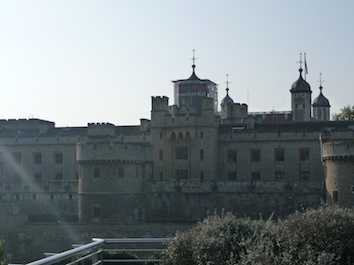
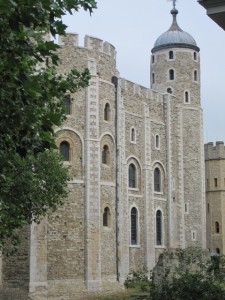
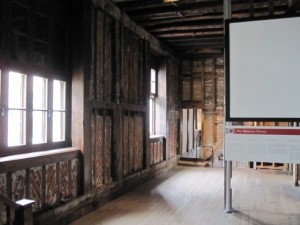
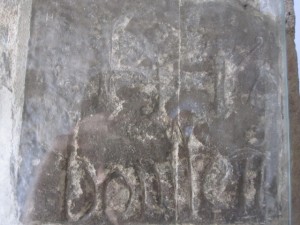
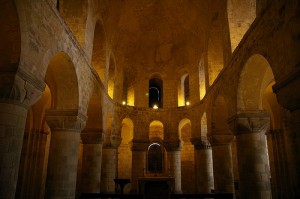
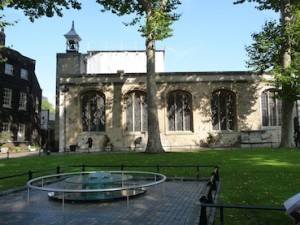
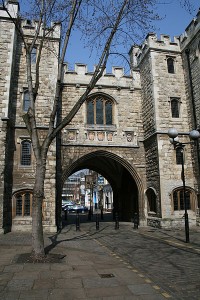
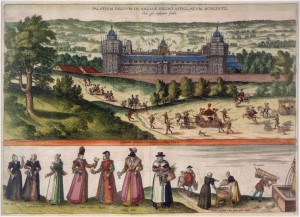

















Thank you Mike for taking the time to share your summer progress with us keen followers. I have really enjoyed waiting for each days installment. I am sorry we couldnt provide nice weather for you, but it is typically an English summer. And besides, who cares about the weather when you are On The Tudor Trail!
loved reading about you tour, it was great! wish i had a brick! if you can would love to see a picture of it on here.
I have never been to England so I really enjoyed reading about your trip. Thank you for taking the time to write about it.
Hello: When you do another trip go to St.Albans Cathedral maybe you already been there, but is so beautiful and interesting, the town is incredible.As soon I learn to do a web site I will post all the pictures and I will do a blog, I need to learn.Your site is so beautiful. You can post a lot of things from that town as well .
Bye….:)
I would love to see all of your photos!